Failure Mechanism of Back-Break in Bench Blasting of Thin Terrane
Abstract
1. Introduction
2. Structural Dynamics Model of a Layered Rock Mass
2.1. Simplified Structural Mechanical Model
2.2. Single Degree of Freedom (SDOF) Dynamic Model of a Layered Rock Mass
2.3. Calculation Parameters and Failure Criteria
2.3.1. Structural Stiffness
2.3.2. Explosion Load
2.3.3. Failure Criterion of a Rock Cantilever Beam Structure
3. Influence of a Thin Stratum on the Forming Effect of a Free Surface after Blasting
3.1. Calculation Pressure Length of Explosive Gas on a Rock Layer
3.2. The Damage Range of the Structural Model
4. Comparison of Numerical Simulations
4.1. Simplified Structural Mechanical Model
4.2. Result Analysis
4.2.1. The Influence of the Dip Angle on the Development of Bedding Joints
4.2.2. Influence of Rock Dip Condition on the Failure Range of the Remaining Rock
5. Engineering Measurements and Discussion
5.1. Project Overview
5.2. Measured Results and Analysis
5.2.1. Failure Characteristic Analysis
5.2.2. Control Measures of the Free Surface Shape
6. Conclusions
Author Contributions
Funding
Informed Consent Statement
Conflicts of Interest
References
- Faramarzi, F.; Farsangi, M.A.E.; Mansouri, H. An RES-Based Model for Risk Assessment and Prediction of Backbreak in Bench Blasting. Rock Mech. Rock Eng. 2013, 46, 877–887. [Google Scholar] [CrossRef]
- Trivedi, R.; Singh, T.N.; Gupta, N. Prediction of Blast-Induced Flyrock in Opencast Mines Using ANN and ANFIS. Geotech. Geol. Eng. 2015, 33, 875–891. [Google Scholar] [CrossRef]
- Chuang, H.E.; Dongmei, Y.I.N. Analysis of Influence of Free Surface and Minimum Resistance Line on Blasting Vibration. Tunn. Constr. 2018, 1, 1–6. [Google Scholar]
- Singh, P.K.; Roy, M.P.; Sinha, A. Causes of toe formation at dragline bench and its remedial measures. Rock Fragm. Blasting 2012, 11, 187–192. [Google Scholar]
- Xiao, Z.X.; Guo, X.B.; Zhang, J.C.; Pu, C.J.; Xiao, D.J.; Xia, Z.K. Numerical simulation and test of lamination effect caused by blasting in layered rock slope with weak intercalated layer. Rock Soil Mech. 2009, 30, 31–34. (In Chinese) [Google Scholar]
- Ma, L.; Lai, X.; Zhang, J.; Xiao, S.; Zhang, L.; Tu, Y. Blast-Casting Mechanism and Parameter Optimization of a Benched Deep-Hole in an Opencast Coal Mine. Shock Vib. 2020, 33, 875–891. [Google Scholar] [CrossRef]
- Taliercio, A. A failure conditions for layered rock. Rock Mech. Min. Sci. 1988, 25, 299–305. [Google Scholar] [CrossRef]
- Sacchi, G.; Taliercio, A. A Note on Failure Condition for Layered Materials Mechanics. J. Meccanica 1987, 22, 97–102. [Google Scholar] [CrossRef]
- Bayly, B. Deformability of Layred of Jointed Rock Masses. Analysis and Comparison of different Typesof Test. Rock Mech. Min. Sci. 1982, 19, 195–199. [Google Scholar] [CrossRef]
- Ash, R.L. Influence of Geological Discontinuities on Rock Blasting. Ph.D. Thesis, Ph D Symp on rock mechanics, University of Minnesota, New York, NY, USA, 1973; pp. 263–271. [Google Scholar]
- Ash, R.L.; Konya, C.J. Flexible Sprengung—Eine Neue Theorie uber Fellsprengung. Proc. Informationstag für Sprentechnik; Wirtschaftsforderunginstitut: Linz, Austria, 1975; Volume 11, pp. 13–24. [Google Scholar]
- Barker, D.B.; Fourney, W.L.; Holloway, D.C. Photoelastic investigation of flan initiated cracks and their contribution to the mechanism of fragmentation. In Proceedings of the 20th US Symposium on Rock Mechanics (USRMS), Austin, TX, USA, June 1979; pp. 119–128. [Google Scholar]
- Wang, M.Y.; Qian, Q.H. Attenuation law of explosive wave propagation in cracks. Chin. J. Geotech. Eng. 1995, 17, 42–46. (In Chinese) [Google Scholar]
- Zhu, J.B.; Zhao, J. Obliquely incident wave propagation across rock joints with virtual wave source method. J. Appl. Geophys. 2013, 88, 23–30. [Google Scholar] [CrossRef]
- Zhu, J.B.; Zhao, X.B.; Wu, W.; Zhao, J. Wave propagation across rockjoints filled with visco elastic medium using modified recursive method. J. Appl. Geophys. 2012, 86, 82–87. [Google Scholar] [CrossRef]
- Jiang, L.W.; Huang, R.Q. Bending yielding and tensile cracking critera for failure of rock slope whose dip direction opposite to the dip direction of strata. J. Eng. Geol. 2006, 14, 289–294. (In Chinese) [Google Scholar]
- Xiao, Y.; Wang, S. A Study on the Flexural Breaking of Rockmass; Mechanics of Jointed and Faulted Rock: Rotterdam, The Netherlands, 1990. [Google Scholar]
- Liang, Y.P.; Sun, D.L. Study on the composed rock beam theory of strata movement and its application. J. Rock Mech. Eng. 2002, 5, 654–657. [Google Scholar]
- Mandal, S.K.; Dasgupta, M.M.S. Theoretical concept to understand plan and design smooth blasting pattern. Geotech. Geol. Eng. 2008, 26, 399–416. [Google Scholar] [CrossRef]
- Hasanipanah, M.; Shahnazar, A.; Arab, H.; Golzar, S.B.; Amiri, M. Developing a new hybrid -AI model to predict blast-induced back-break. Eng. Comput. 2017, 33, 349–359. [Google Scholar] [CrossRef]
- Ebrahimi, E.; Monjezi, M.; Khalesi, M.R.; Armaghani, D.J. Prediction and optimization of back-break and rock fragmentation using an artificial neural network and a bee colony algorithm. Bull. Eng. Geol. Environ. 2016, 75, 27–36. [Google Scholar] [CrossRef]
- Liu, J.; Wang, S.R.; Gao, Q.C. Numerical simulation of rock remain damage characteristics under single hole bench blast. Explos. Shock Waves 2003, 23, 241–247. [Google Scholar]
- Dey, A.; Gupta, R.N.; Ghose, A.K. Blast evaluation using high speed video camera: A case study in Jharia coalfield. J. Mines Met. Fuels 1999, 47, 31–35. [Google Scholar]
- Jiang, L.; Zeng, J.; Wang, G. A discrete dynamic response model with multiple degrees of freedom for horizontal goaf group. J. Rock Mech. Eng. 2016, 35, 59–67. (In Chinese) [Google Scholar]
- Tileylioglu, S.; Stewart, J.P.; Nigbor, R.L. Dynamic stiffness and damping of a shallow foundation from forced vibration of a field test structure. J. Geotech. Geoenviron. Eng. 2011, 137, 344–353. [Google Scholar] [CrossRef]
- Nielsen, A.H. On the use of Rayleigh damping for seismic analysis. Proc. Inst. Civ. Eng. Eng. Comput. Mech. 2009, 162, 215–220. [Google Scholar] [CrossRef]
- Daehnke, A. Blast-Induced Dynamic Fracture Propagation. In Proceedings of the 5th International Symposium on Rock Fragmentation by Blasting-FRAGBLAST-5, Montreal, Canada, 25–29 August 1996; pp. 619–626. [Google Scholar]
- Esen, S.; Onederra, I. Modelling the size of the crushed zone around a blasting hole. Int. J. Rock Mech. Min. Sci. 2003, 40, 485–495. [Google Scholar] [CrossRef]
- Liu, Y.C.; Wang, X.G.; Liu, L.S.; Dou, J.L. An energy method for calculate borehole pressure under decoupled charging. China Min. Mag. 2011, 18, 104–107. [Google Scholar]
- Ming, C.; Tao, L.; Zhiwei, Y.; Wenbo, L.; Peng, Y. Calculation methods for peak pressure on borehole wall of contour blasting. Explos. Shock Waves 2019, 39, 103–112. (In Chinese) [Google Scholar]
- Yilmaz, O.; Unlu, T. Three-dimensional numerical rock dam-age analysis under blasting load. Tunn. Undergr. Space Technol. 2013, 38, 266–278. [Google Scholar] [CrossRef]
- Liu, B.C. Study on Hole Stemming Theory of One-Step Deep Hole Raise Blasting and Its Application; Central South of University: Changsha, China, 2014. [Google Scholar]
- Hsu, C.T.T. T-shaped reinforced concrete members under biaxial bending and axial compression. Struct. J. 1989, 86, 460–468. [Google Scholar]
- Lu, W.; Bai, B.; Chen, C.X. Analysis of mechanism of plane sliding failure for bedded rock slopes. Rock Soil Mech. 2011, 32, 204–207. [Google Scholar]
- Wenbo, L. A study of fracture propagation velocity driven by gases of explosion products. Explos. Shock Waves 1994, 3, 264–268. [Google Scholar]
- Feng, C.; Guo, R.K. Effect of joints on blasting and stress wave propagation. J. Rock Mech. Eng. 2018, 37, 2027–2036. (In Chinese) [Google Scholar]
- Huang, F.; Yao, C.; Zhou, C.; Yang, J. Numerical simulation and seepage analysis of stochastic fracture network considering correlation between fracture trace length and aperture. Hydro Sci. Eng. 2018, 2, 35–42. (In Chinese) [Google Scholar]
- Feng, C.; Li, S.H.; Hao, W.H.; Ge, W. Numerical simulation for penetrating and blasting process of EPW based on CDEM. J. Vib. Shock 2017, 36, 11–18. (In Chinese) [Google Scholar]
- Pan, P.F.; Sun, H.G.; Han, Z.; Feng, C.; Guo, R.; Li, S. Numerical Study on Damage and Fracture Degree of Rock Mass induced by blasting mining. Met. Mine 2016, 6, 1–7. [Google Scholar]

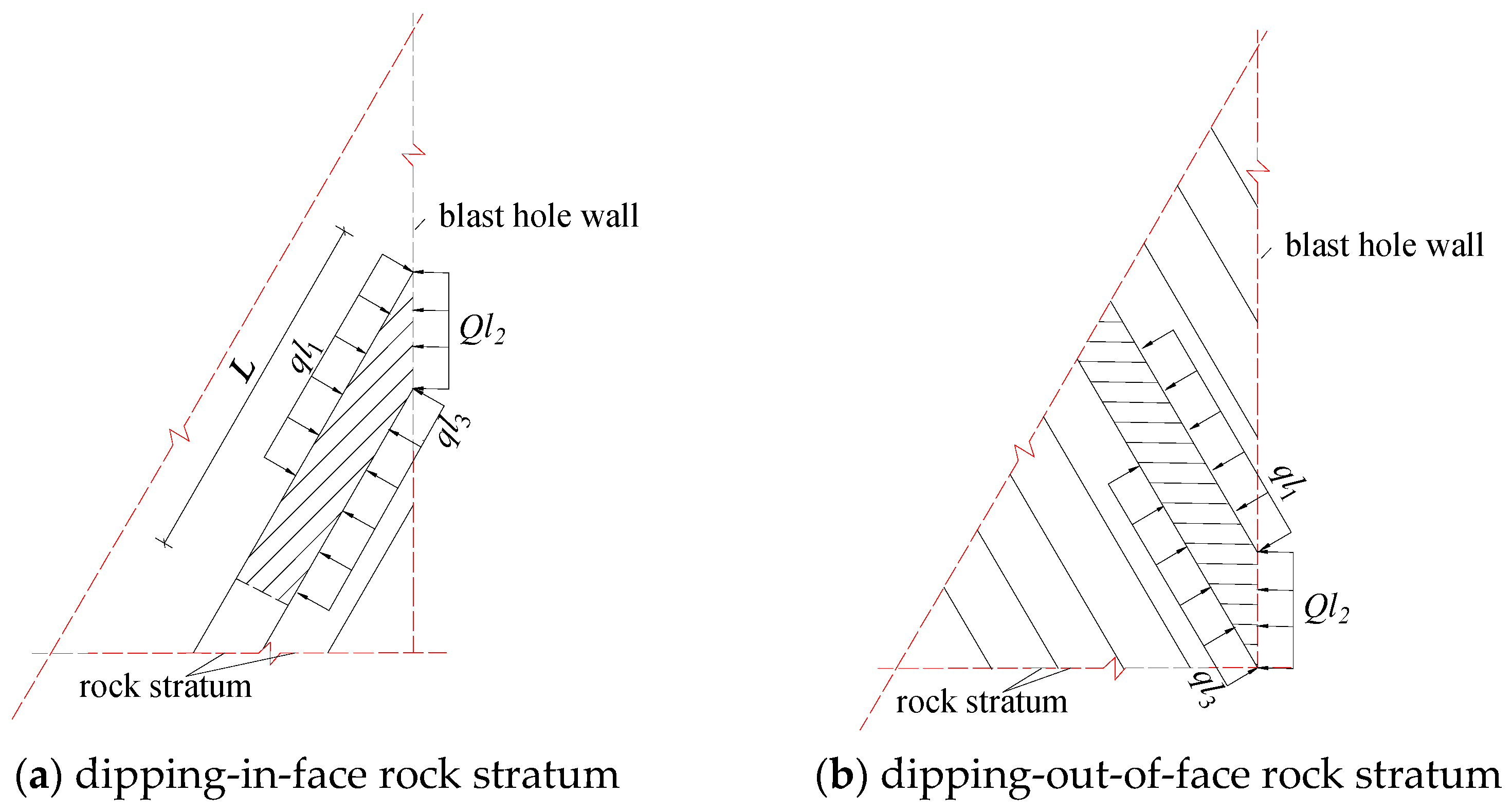
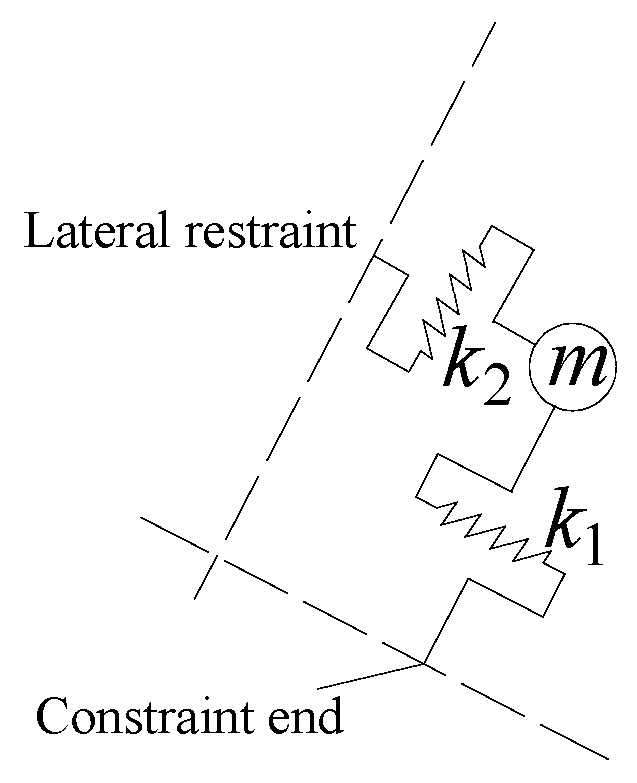
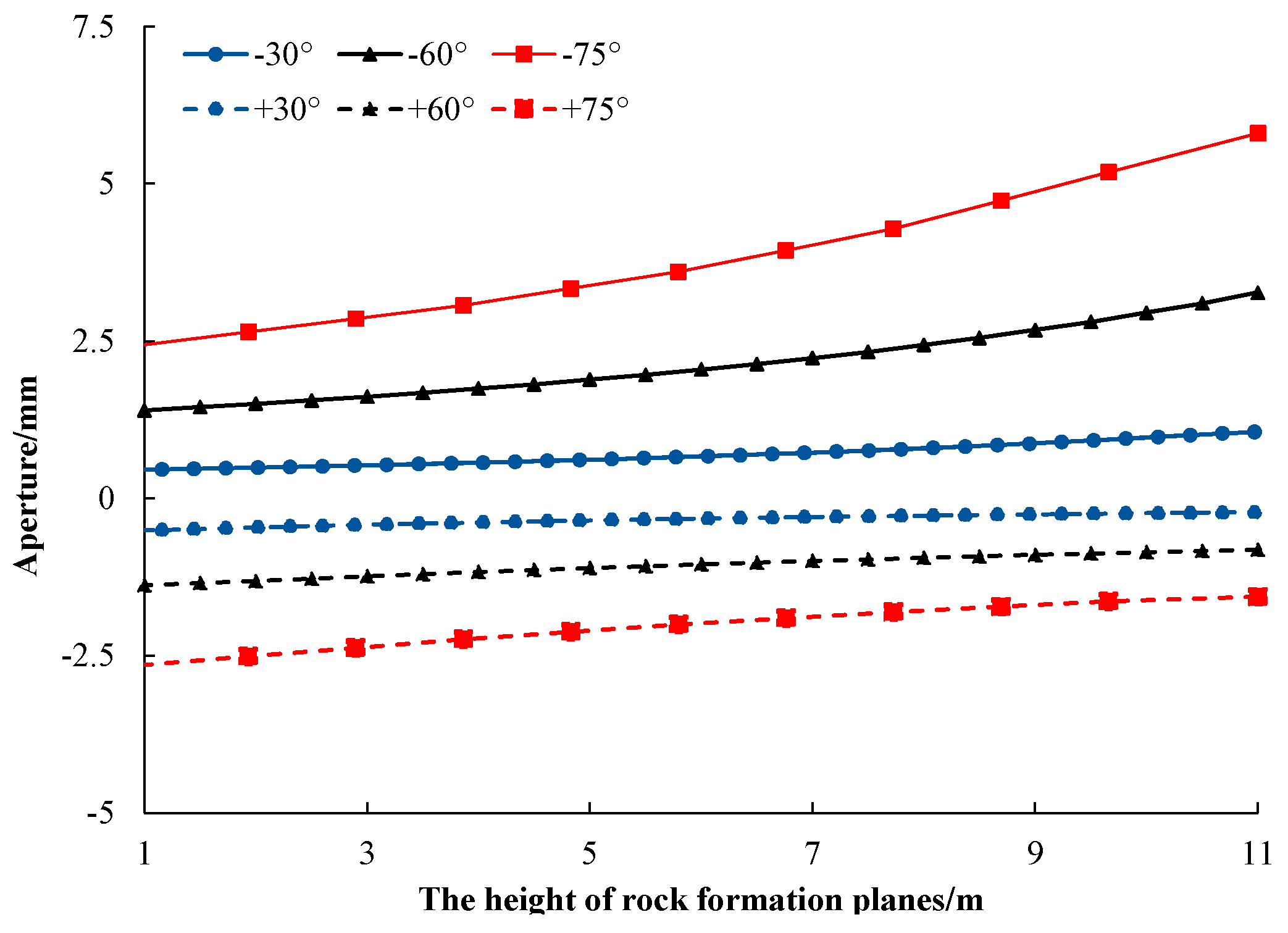
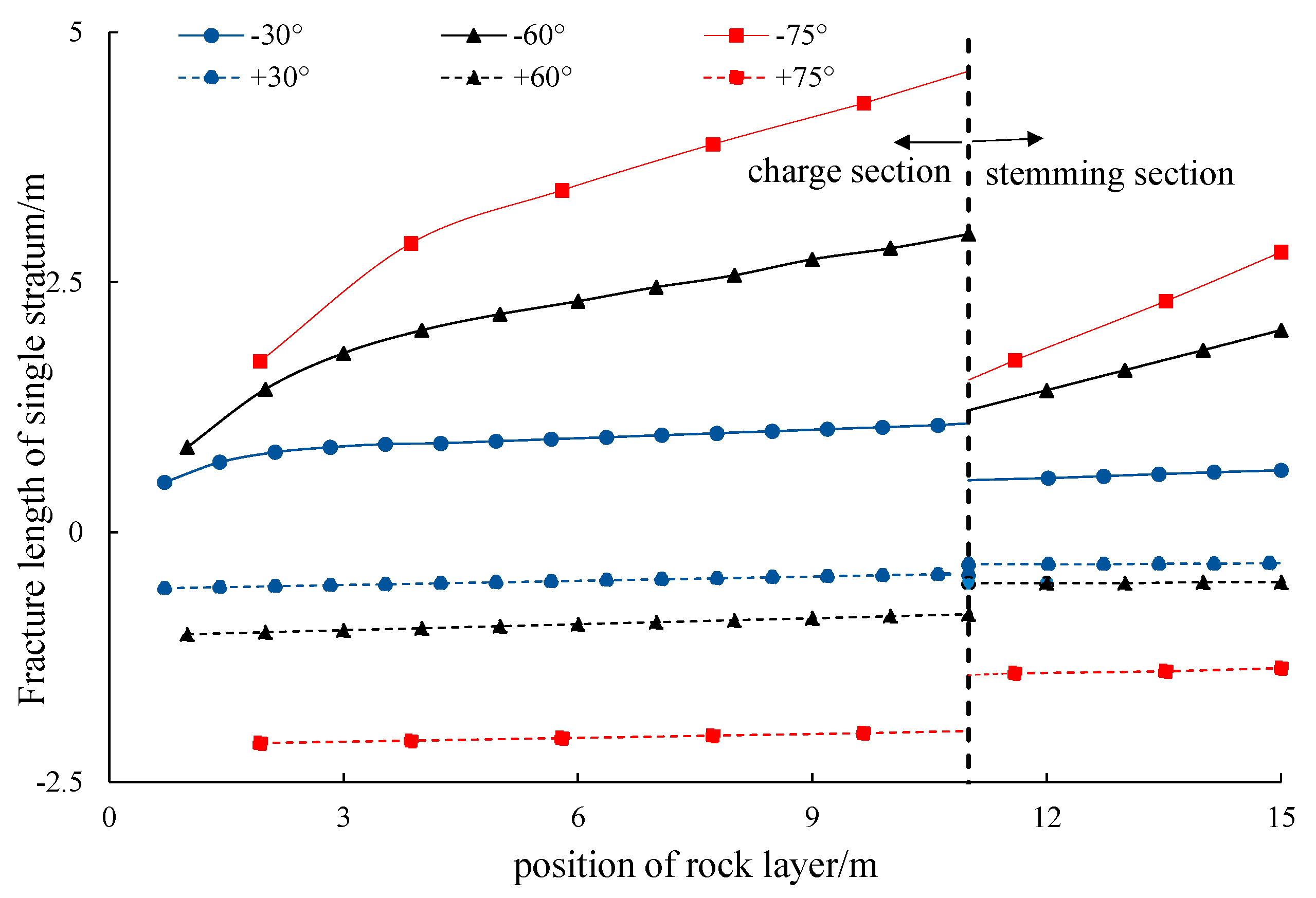
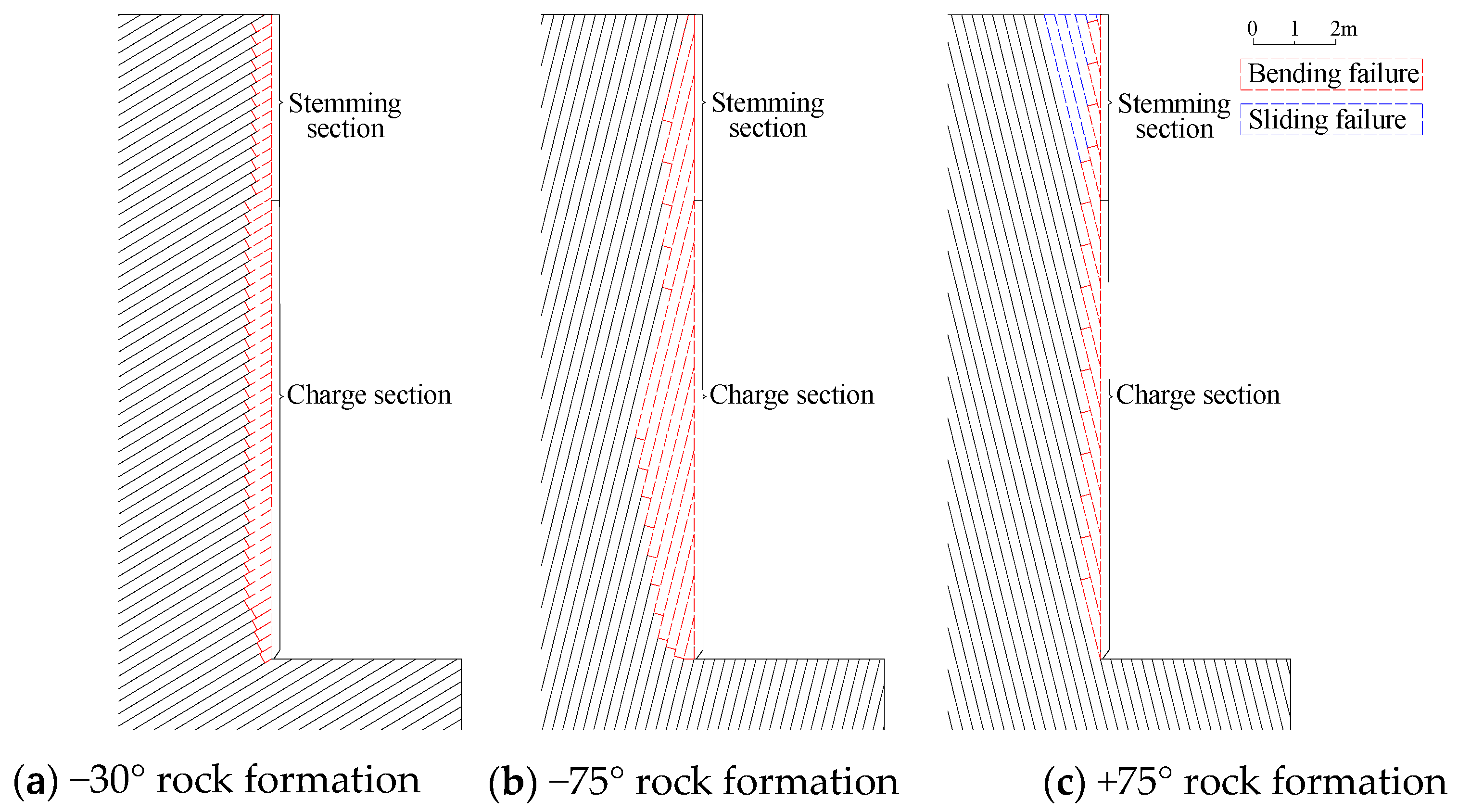

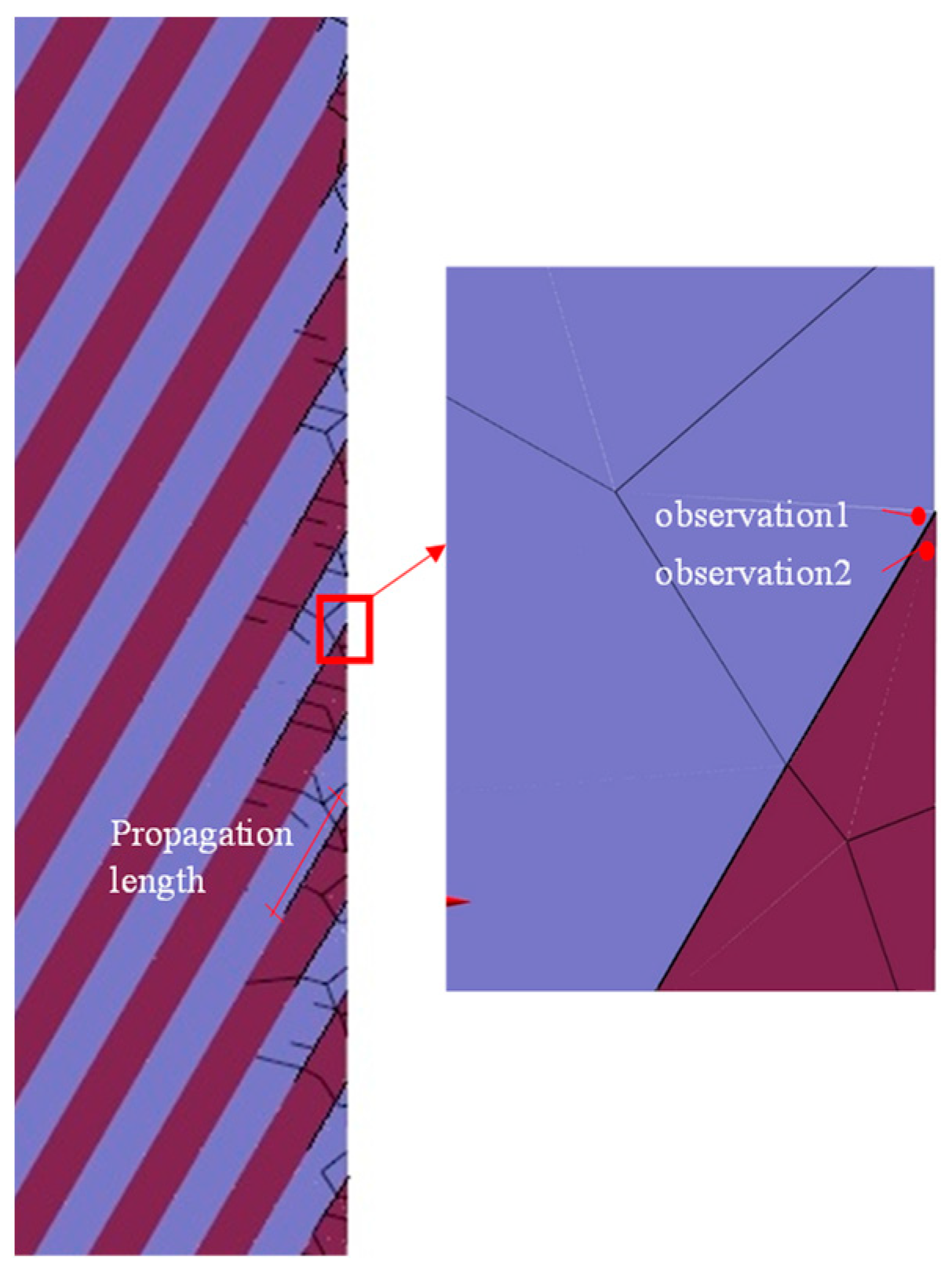
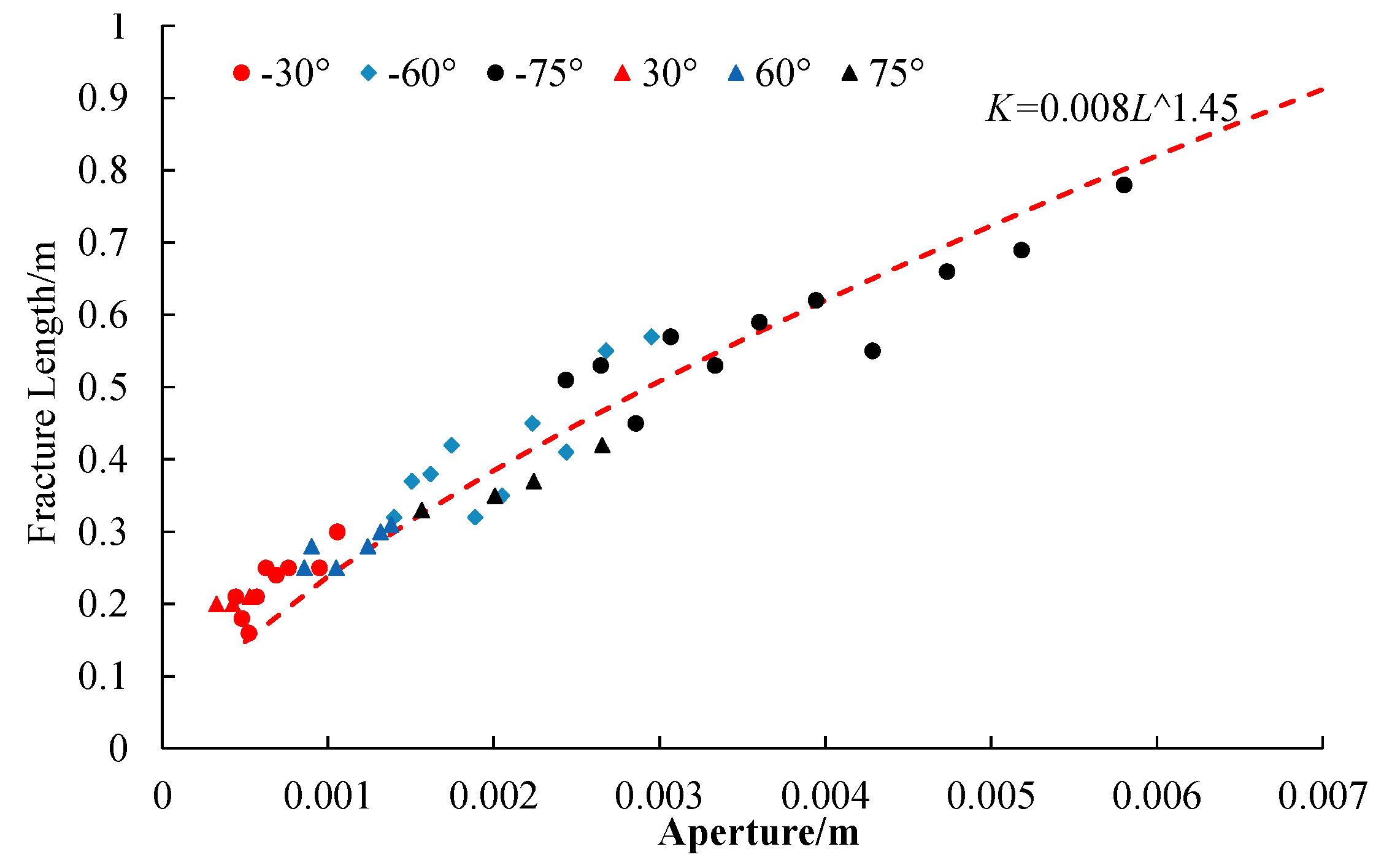


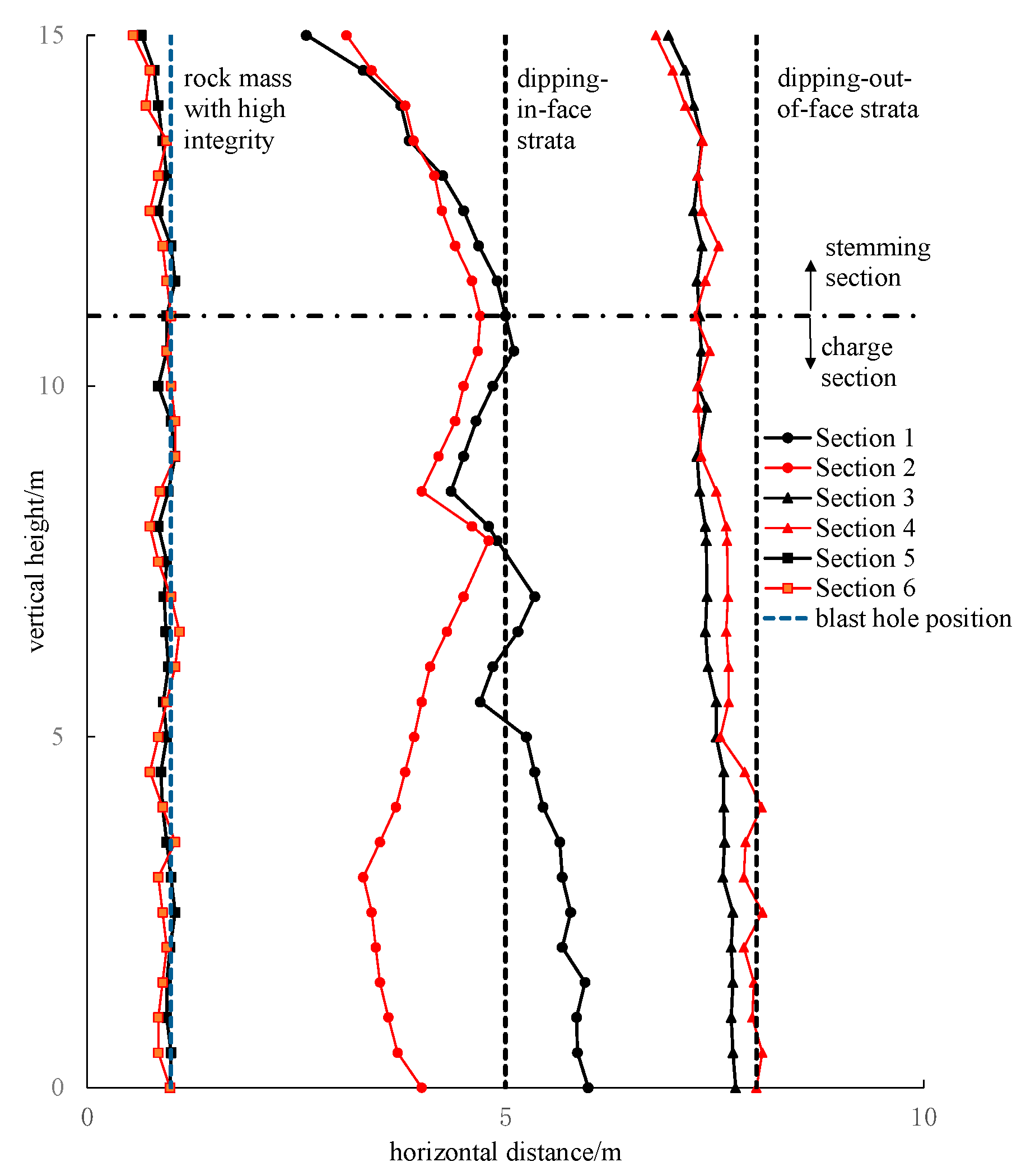
| Thickness of Stratum /m | Height of Rock Bench/m | Elastic Modulus/GPa | Shear Modulus/Gpa | Cohesion/MPa | Compressive Strength/MPa | Tensile Strength/MPa | Rock Density (Kg/m3) |
| 0.2 | 15.0 | 24.0 | 10.0 | 1.8 | 64.9 | 8.5 | 2680 |
| Friction angle | Explosive density ρ (g/cm3) | Explosive detonation velocity C (m/s) | Characteristic index β | Relevant parameter a | Longitudinal wave velocity Cp (m/s) | Normal stiffness (GPa/m) | Shear stiffness (GPa/m) |
| 40° | 0.85 | 2950 | 1.45 | 0.008 | 3500 | 5000 | 5000 |
| Test Sequence | Strata | Initiation Conditions | Bench Heigh/m | Hole Diameter/mm | Density Coefficient | Hole Spacing/m | Row Spacing/m | Stemming/m | Unit Consumption (Kg/m3) |
|---|---|---|---|---|---|---|---|---|---|
| 1 | dipping-out-of-face stratum | bottom initiation | 15.0 | 140 | 1.55 | 6.2 | 4.0 | 4 | 0.41 |
| 2 | 14.0 | 140 | 1.50 | 6.6 | 4.4 | 4 | 0.40 | ||
| 3 | dipping-in-face stratum | 15.0 | 140 | 1.54 | 6.3 | 4.1 | 4 | 0.41 | |
| 4 | 14.0 | 140 | 1.50 | 6.5 | 4.3 | 4 | 0.40 | ||
| 5 | without stratum | 15.0 | 140 | 1.50 | 6.4 | 4.2 | 4 | 0.40 |
Publisher’s Note: MDPI stays neutral with regard to jurisdictional claims in published maps and institutional affiliations. |
© 2021 by the authors. Licensee MDPI, Basel, Switzerland. This article is an open access article distributed under the terms and conditions of the Creative Commons Attribution (CC BY) license (http://creativecommons.org/licenses/by/4.0/).
Share and Cite
Wei, D.; Chen, M.; Lu, W.; Wang, Z. Failure Mechanism of Back-Break in Bench Blasting of Thin Terrane. Appl. Sci. 2021, 11, 2577. https://doi.org/10.3390/app11062577
Wei D, Chen M, Lu W, Wang Z. Failure Mechanism of Back-Break in Bench Blasting of Thin Terrane. Applied Sciences. 2021; 11(6):2577. https://doi.org/10.3390/app11062577
Chicago/Turabian StyleWei, Dong, Ming Chen, Wenbo Lu, and Zhihua Wang. 2021. "Failure Mechanism of Back-Break in Bench Blasting of Thin Terrane" Applied Sciences 11, no. 6: 2577. https://doi.org/10.3390/app11062577
APA StyleWei, D., Chen, M., Lu, W., & Wang, Z. (2021). Failure Mechanism of Back-Break in Bench Blasting of Thin Terrane. Applied Sciences, 11(6), 2577. https://doi.org/10.3390/app11062577






